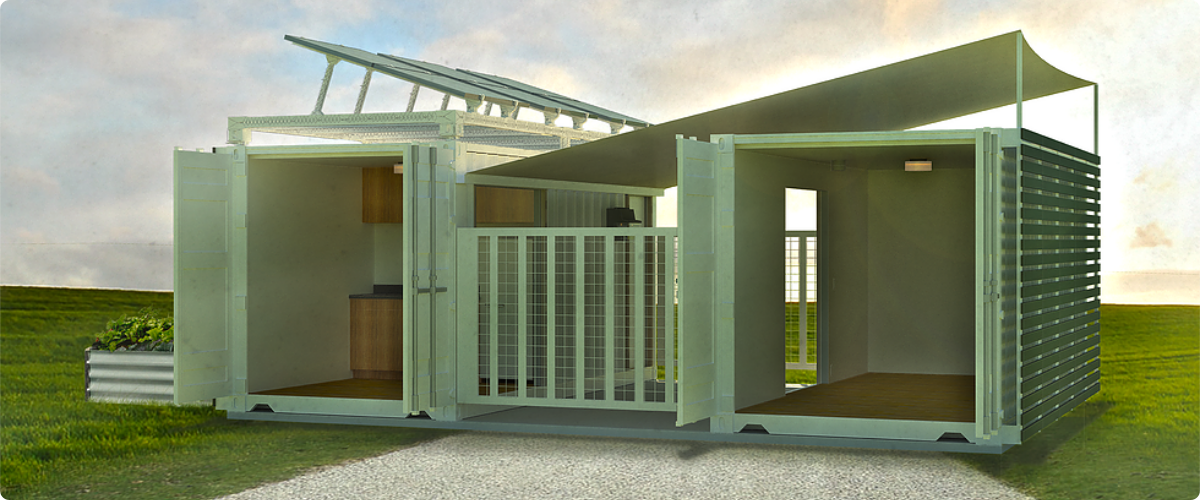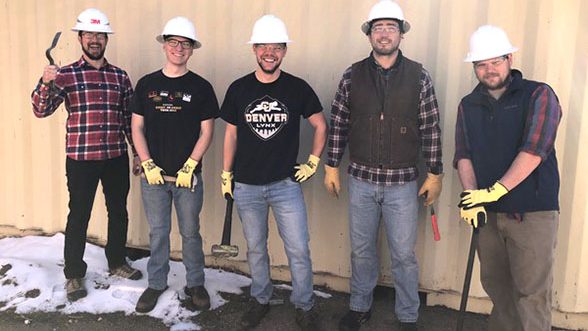
There are more refugees today than ever before, and many live in camps of a million or more people. The camps need medical facilities, bathrooms, showers, water sanitation and other long-term structures to serve basic functions for people. Undergraduate students in the College of Engineering and Applied Science have developed a way to save time and tens of thousands of dollars in building these facilities. It’s called Project [un]Contained.
Their project turns shipping containers into structures serving these central needs. The containers are fitted with solar power and water, and between containers there is a courtyard area.

“If you think about it, there are a lot of applications for this,” said Peter Jenkins, PhD, PE, associate dean of research and professor of mechanical engineering, who advises the project. “It could be a lab, a clinic, a classroom. There are a lot of things these containers could be used for, so I was very supportive of this.”
Fitting the solution to the problem
When the design process began in May 2017, the plan for the project was very different. Students hoped that shipping containers could serve as permanent tiny houses for Haiti’s displaced population. The process turned out to be too expensive for living quarters, but the students found a new use for the containers – one that actually saves money.
“We met with a couple organizations who said, ‘You should really consider looking at places outside of Haiti,’” said engineering student Nic Chandler, who serves as project captain. “Then, the United Nations released a statement saying there are now 65.7 million refugees in the world, the largest amount ever.”
The largest refugee camp in the world currently has more than 240,000 people and the 10 largest refugee camps combined have almost a million people. Inhabitants live in tents, which are shipped in using shipping containers. For a 20,000-person settlement with five people per tent, 27 shipping containers must be used to transport these tents alone.


